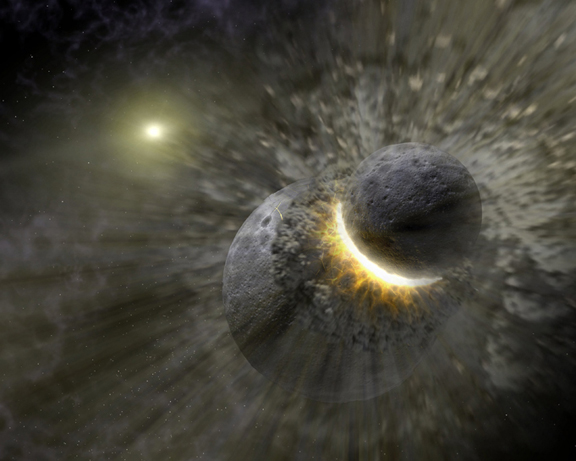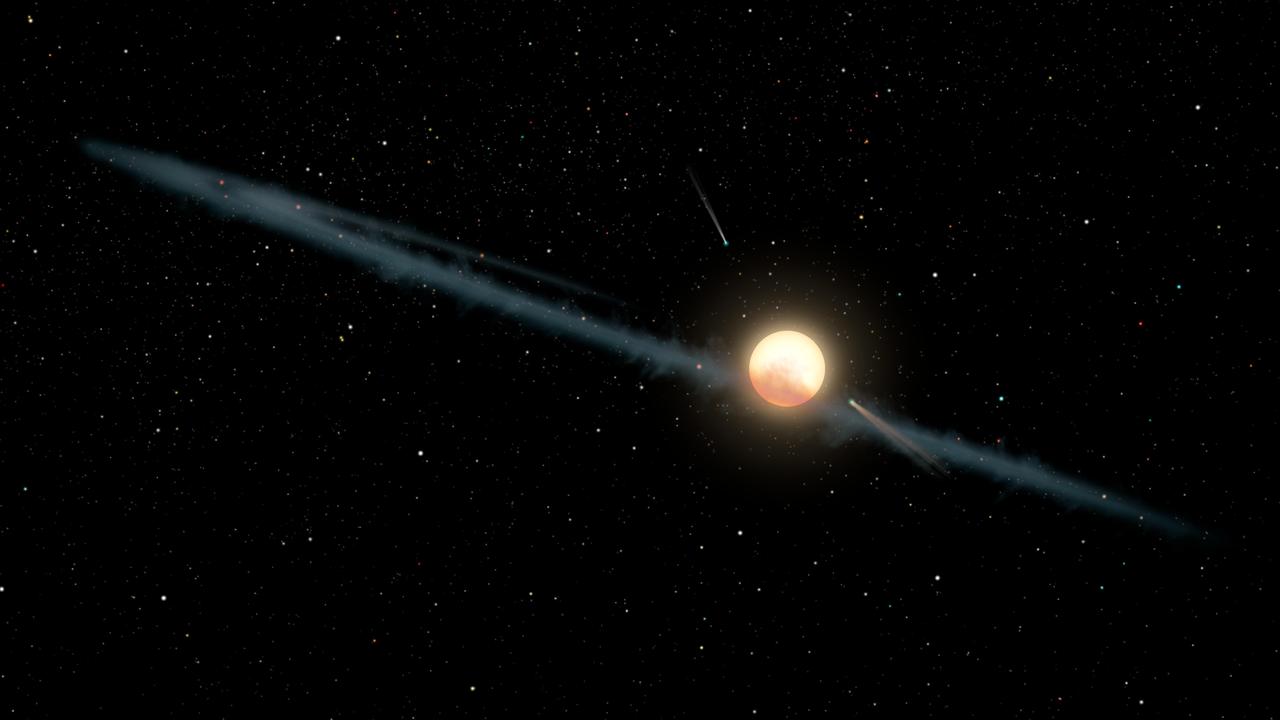Arguably challenging my subject line -- but "planet" did, originally, mean "wandering star" -- the first of two subtopics herein could be described as planet-struck. The generally accepted theory of solar-system formation involves a great deal of accretion and sweeping up of matter from the ancestral "solar nebula." If I may quote myself: (*)
"Aggregating, clumping, sweeping … it all sounds stately and serene. It can happen that way—but usually doesn’t. The heavily cratered surface of the Moon testifies to the violence of the Solar System’s (not thought to be unusual) Late Heavy Bombardment period. The Moon itself, it is believed, coalesced from Earth-orbiting debris after a Mars-sized protoplanet struck the young Earth a glancing blow."
(*) from Trope-ing the Light Fantastic: The Science Behind the Fiction
 |
| The Moon is born? |
"... could only have formed under incredible pressure — the equivalent of diving 600 kilometers into Earth's interior or attempting to hold up 100,000 tons with your bare hands...
...
"... the meteorite's parent body would have to have been a planet at least as big as Mercury and possibly as large as Mars."For the full story, see, "These diamonds from space formed inside a long-lost planet, scientists say."
And today's second (and unambiguously stellar) update? It relates to the long-running mystery that is KIC 8462852 -- the sun unofficially known as Tabby's Star (after its discoverer, astronomer Tabetha Boyajian). If this doesn't ring a bell, Tabby's Star exhibits two bizarre behaviors: major fluctuations in brightness over mere days, and a marked, ongoing, overall dimming that's continued for more than a century. In both cases, that's just weird. Stars don't act that way -- except this one. (*)
(*) Also discussed in Trope-ing. Astronomy does underlie a lot of SF.
 |
| NASA visualization/speculation |
For the latest (unconvincing) attempt to explain the IMO still inexplicable, see "Dust to dust: the mystery of Tabby’s star deepens."
And now I'll turn my gaze earthward. My keyboard has more mundane duties today ;-)

































No comments:
Post a Comment